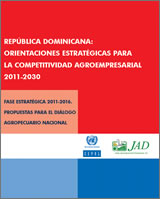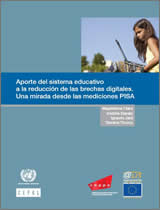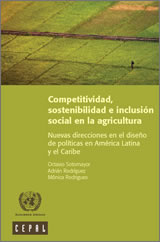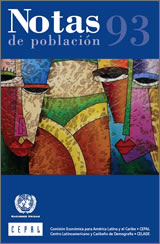PUBLICATIONS

(February 2012, Spanish only)
Authors:
Osmar C. Benítez, Jaquín Díaz Ortega, Soraya Rib and Braulio Serna
This publication, edited by ECLAC Subregional Headquarters in Mexico,
highlights the Dominican Republic's potential for developing productive agricultural and agro-industrial
chains by 2030, with higher added value and greater international competitiveness, and the possibility of
integrating them into global and domestic markets and tourist demand.

(December 2011, Spanish only)
Authors: Magdalena Claro, Andrés Espejo, Ignacio Jara and Daniela
Trucco
In this document, the authors discuss the role which secondary education schooling systems are playing
regarding Information and Communication Technologies (ICTs) in some countries in Latin America and the
Caribbean. The data on access and use of ICTs by students aged 15 years old used in this publication was
gathered by the PISA study between 2000-2009.

(December 2011, Spanish only)
Authors: Octavio Sotomayor, Adrián Rodríguez and Mônica Rodrigues
This publication examines how to increase regional agricultural competitiveness in Latin
America and the Caribbean, while reducing social inequality and poverty. Likewise, it discusses how this
development process of agriculture can be made more sustainable; what the most appropriate institutional
schemes are for driving agricultural and rural development; and what is the role of social actors is in the
new structures of governance. It aims to explain the main innovations, as well as the wide variety of methods
and political approaches for promoting and increasing the agricultural sector's contribution to sustainable
and inclusive development of Latin American and Caribbean societies.

(December 2011, Spanish only)
Author: CELADE – Population Division of ECLAC
This edition of the magazine Population Notes has seven articles about sociodemographic
issues, such as adolescents in conflict with the law in Brazil, unmarried motherhood in Latin America,
divorce, the situation of Brazilian emigrants who return to their country and the impact on demographic
structure and the residential segregation of internal migration in cities in the region.